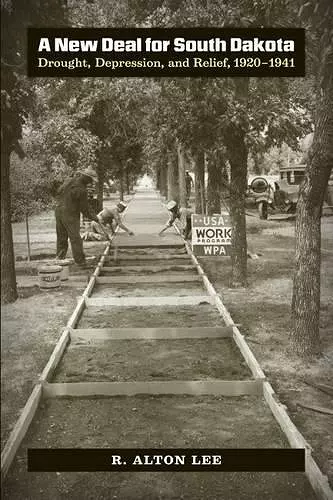A New Deal for South Dakota
Drought, Depression, and Relief, 1920–1941
Format:Paperback
Publisher:South Dakota State Historical Society
Published:30th Oct '16
Currently unavailable, our supplier has not provided us a restock date

In South Dakota, drought, grasshoppers, and low commodity prices were the final blows in a long economic downturn that began after World War I. These conditions finally brought the state to its knees during the Great Depression. Many South Dakotans fled; others hung on with the aid of New Deal programs. Instituted by President Franklin D. Roosevelt and administered by politicians like the colorful Democratic governor Tom Berry, New Deal projects supported nearly half of South Dakota’s entire population in the depths of the depression.
The built landscape and economic underpinnings of present-day South Dakota are direct legacies of this era. Civilian Conservation Corps and Works Progress Administration projects expanded the state’s infrastructure by building dams, civic facilities, and highways that are still used today. Other programs offered additional opportunities for young people, women, and minorities.
The state’s familiar political culture and style of governance also harkens back to the Great Depression, as South Dakotans voted to reject their short-lived Democratic government and entrust the administration of the New Deal to Republican lawmakers such as Governor Leslie Jensen. The story is one of desperate times, intense rivalries, and rare moments of cooperation as a devastated Plains state fought to keep its head above water.
Political historian R. Alton Lee examines the effects of New Deal programs on families, farmers, miners, youth, women, American Indians, and others. Focusing on South Dakota, he evaluates the state’s efforts to stave off both starvation and federal dependence as its people endured the worst natural and economic disaster of modern times.
ISBN: 9781941813119
Dimensions: unknown
Weight: unknown
269 pages